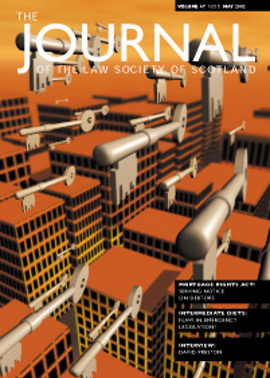Sleeping with the enemy
A century and a half ago Abraham Lincoln said: “The only safe way to destroy your enemy is to make him your friend”. Whether on a local or international level, this seems easier said than done. “An eye for an eye and we all go blind,” reflected Mahatma Gandhi. As lawyers, can we preserve the vision shown by our predecessors Lincoln and Gandhi?
Nelson Mandela once said: “I never sought to undermine Mr de Klerk, for the practical reason that the weaker he was, the weaker the negotiations process. To make peace with an enemy one must work with that enemy, and the enemy must become one’s partner.”
The history of Mandela’s application of this theory is the recent history of South Africa. As the two sides to the apartheid conflict came together, they realised that their perceptions of each other were wrong. They came to see that there was an alternative to a white victory or a black victory – or even a split-the-difference compromise. There was a future in which to win did not mean that the other side had to lose. It was possible for all sides to benefit. Hard work and difficult, yes, but much less so than all-out bloody civil war.
According to William Ury, author of an inspiring book “The Third Side: Why We Fight and How We Can Stop” (Penguin), there is a growing realisation of our need to be much more creative in our approach to conflict, whether in personal relationships, in business and commerce or in world politics. Ury identifies trends throughout the world in which a transformation of the culture of conflict is occurring, from coercion to consent and from force to mutual interest.
I saw tangible evidence of this at the recent American Bar Association conference on Dispute Resolution in Seattle. There is a cultural wave sweeping through the legal profession and government bodies in the US. The lawyer’s job, as the Attorney General for Washington State put it, is about solving average problems for average people, not winning or losing – and remembering that there are two sides to almost any story.
Her own example was a remarkable one. The recent mediated settlement of litigation brought collectively by the various States against the tobacco industry resulted in an “holistic” solution, viewed by parties as a mutually satisfactory outcome. A rigorous approach to the issues was accompanied by increased respect and understanding on all sides, producing a speedy, wide-ranging resolution of what could have been interminable conflict.
In negotiation and mediation training courses, I often invite participants to take part in The Gain Game, a version of a game called The Prisoners’ Dilemma. Participants learn how easily we become competitive and seek to requite the other side for wrongs allegedly done. Trust is easily broken, and once lost is hard to regain. The urge to win at the expense of the other is strong for many. Language (careful and careless) sends messages which are easily misunderstood. Respect for the other side is replaced by antagonism. Only at the end do many discover that apparent victory can be pyrrhic and bitter-sweet, producing a relatively poor immediate outcome and an even poorer prospect of successful negotiation in the future.
The perceptive players learn early (or through experience) that working collaboratively with the other side will often (nearly always) produce a better result, not only for themselves and their client but also for the other side. And it doesn’t matter if the other side also gains! Indeed, that may be the key to getting what each side really wants.
The concept of “joint gain” is often a difficult one to grasp in our adversarial tradition. And yet, as Edward de Bono has pointed out, argument which merely seeks to prove that one side is right and the other side is wrong can be extremely inefficient. Working co-operatively (or in co-opetition as de Bono has described it) can generate quite novel outcomes in many conflicts. Often, however, we are constrained by our training and education, by our culture and work pressures, from thinking “out of the box”.
Business and commerce is moving on. Individuals are less likely to accept things as they always were. The role of the lawyer in society is under scrutiny. Paradoxically in our rights-based culture, the future for many more lawyers is likely to be in the role of creative problem-solvers, or “solution-seekers”, assisting clients to achieve co-operative results which meet real interests rather than vindicating positions or rights. And we will find that co-operation can be contagious.
In this issue
- Sleeping with the enemy
- No compelling grounds for retrospective legislatio
- Serving notices under the Mortgage Rights Act
- Breaking the mould
- Karl Construction strikes again
- Lure of the law still strong
- More preparation for practitioners and sheriffs
- The Preston front
- Website reviews
- Finding, keeping, sending
- Omissions cause most claims
- In practice
- A modern way to meet
- Europe
- In and out of the Houses
- Book reviews






